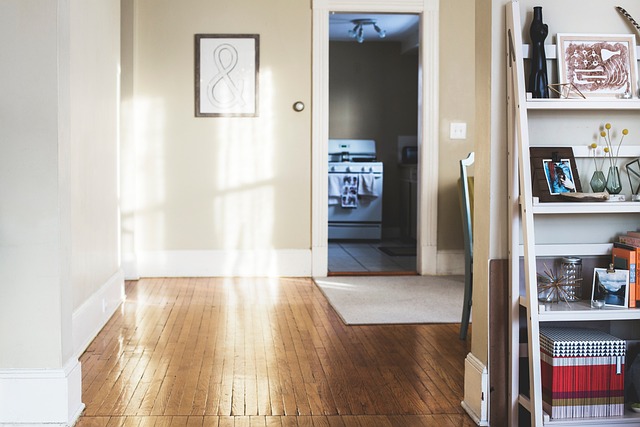When cleaning tile floors, understanding your floor type is key. Different tiles require distinct care due to porosity and inherent characteristics. Prepare by vacuuming/brooming loose dirt, then use a steam cleaner, mild pH-neutral detergent, and microfiber mops for deep cleaning. Test cleaning solutions on a small area first. Follow manufacturer guidelines, start from one corner in straight lines, and rinse mops frequently. Deep clean every 6-12 months with warm water, mild detergent, and natural cleaners like baking soda or vinegar. Address common stains using appropriate tools and methods. Maintain cleanliness by regularly vacuuming/sweeping and spot cleaning with pH-neutral detergents. Prioritize safety with protective gear, proper handling of chemicals, and adequate ventilation during cleaning.
Discover the best methods for cleaning tile floors with our comprehensive guide. Understanding your tile floor types is key to effective cleaning, followed by gathering the right tools and preparing your space for optimal results. Learn step-by-step mopping techniques and deep cleaning strategies for when regular maintenance isn’t enough. We’ll also tackle common stains and safety precautions, ensuring your tiles stay gleaming.
Understanding Your Tile Floor Types
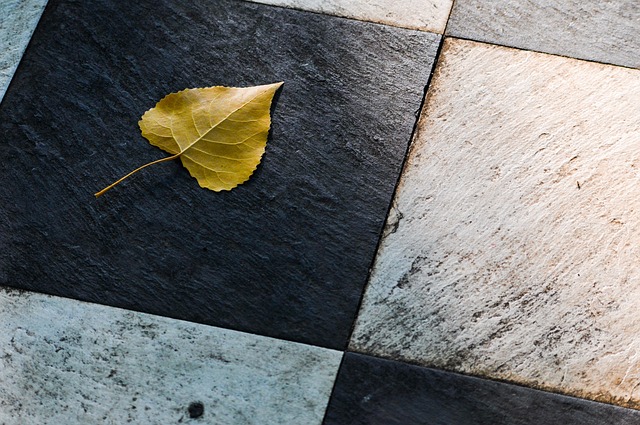
When it comes to tile floor cleaning, understanding your specific floor types is key. Different tiles, like ceramic, porcelain, or natural stone, require tailored care due to their unique properties and porosity levels. The best methods for cleaning tile floors involve knowing what you’re working with.
For example, porous stones like granite or marble need gentle cleaning to avoid absorbing excess water or cleaning solutions. Non-porous tiles, such as ceramic or porcelain, are easier to maintain since they repel liquids. Always consult the manufacturer’s guidelines and consider the best methods for cleaning tile floors based on their specific needs, ensuring a sparkling and durable finish.
Gathering the Right Cleaning Tools and Materials

When it comes to effective tile cleaning, having the right tools and materials is essential. The best methods for cleaning tile floors involve a combination of simple yet effective products. Start with a good quality vacuum or broom to remove any loose dirt or debris. For deep cleaning, invest in a powerful steam cleaner that can cut through tough stains and grime without harsh chemicals.
Don’t forget the importance of using appropriate cleaning solutions. Mild, pH-neutral detergents are ideal for most tile types as they won’t damage or discolor the surface. Avoid using abrasive scrubbers or harsh chemicals unless absolutely necessary, as they can scratch or erode the tile’s finish over time. Instead, opt for soft cloths, sponges, or microfiber mop heads to apply your chosen cleaning solution effectively.
Preparing Your Space for Optimal Results

Preparing your space is a crucial step in achieving optimal results with tile cleaning. Begin by clearing all furniture and objects from the area to be cleaned, ensuring easy access to every corner and crevice. This allows for a thorough clean and reaches areas that might be missed otherwise. Remove any loose debris or dirt on the tiles using a soft broom or vacuum cleaner, as this can affect the cleaning solution’s effectiveness.
For best methods for cleaning tile floors, consider the type of tiles you have. Different tiles may require specific care, so always check manufacturer guidelines. Prepare a suitable cleaning solution by mixing warm water with a mild detergent or a specialized tile cleaner. Test the solution on a small, hidden area first to ensure it doesn’t cause any discoloration or damage. This preparation ensures that when you dive into the cleaning process, you’re doing so effectively and safely.
Mopping Effectively: The Step-by-Step Guide

When it comes to mopping tile floors, a systematic approach ensures optimal results. Start by gathering your supplies: a mop suitable for tiles (preferably with adjustable head height), tile-specific cleaning solution, and microfiber or nylon string mops. Fill your mop with the cleaning solution, ensuring it’s diluted according to the product instructions. Begin mopping from one corner of the room, moving in straight lines. For hard-to-reach areas, use a smaller handheld mop or brush. After each pass, rinse your mop thoroughly to avoid spreading dirt and debris across freshly cleaned tiles. Continue until the entire floor is clean and dry. Regular maintenance with these best methods for cleaning tile floors will keep your tiles looking as good as new.
Deep Cleaning: When to Go Beyond Regular Maintenance
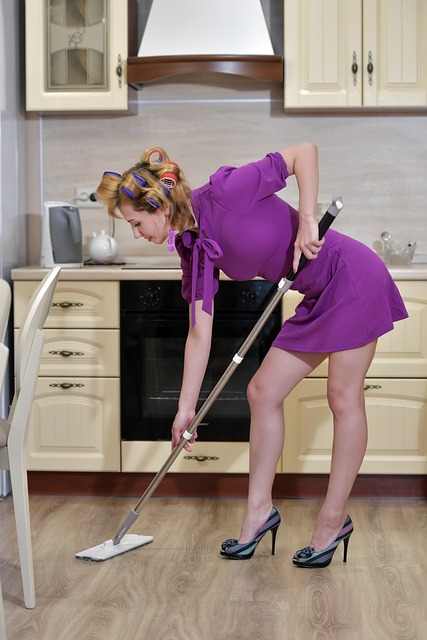
Deep cleaning your tile floors is essential for removing stubborn stains, dirt, and grime that regular maintenance might miss. It’s recommended to go beyond routine upkeep every 6-12 months, or whenever you notice buildup or discolouration. This intensive process involves using specialized tools and products designed to penetrate and lift debris from the grout lines and tile surfaces.
The best methods for cleaning tile floors include mixing a solution of warm water and mild detergent, applying it with a mop or sponge, and thoroughly scrubbing each section before rinsing. For harder-to-remove stains, consider using baking soda or vinegar as natural cleaners. After deep cleaning, ensure thorough drying to prevent moisture damage. Regular deep cleaning sessions will preserve the aesthetics and longevity of your tiled spaces.
Dealing with Common Tile Floor Stains
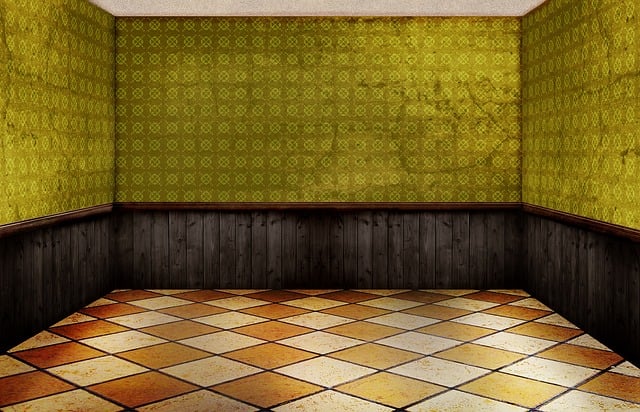
When it comes to tile floor cleaning, addressing common stains is a crucial step. Over time, tiles can accumulate dirt, grime, and various marks left by shoes, furniture legs, or even spills. The best methods for cleaning tile floors involve understanding these stains and using the right tools and solutions.
For instance, grease stains often appear in kitchens due to cooking activities. Using a mild detergent with warm water or a specialized stone or ceramic tile cleaner can effectively break down grease. For stubborn marks, a mixture of baking soda and vinegar can be used as a natural cleaning agent. On the other hand, grout lines are prone to mold and mildew buildup. Regular scrubbing with a brush and a bleach-water solution (always diluted) helps remove these unsightly stains.
Maintaining Your Cleaned Tile Floors
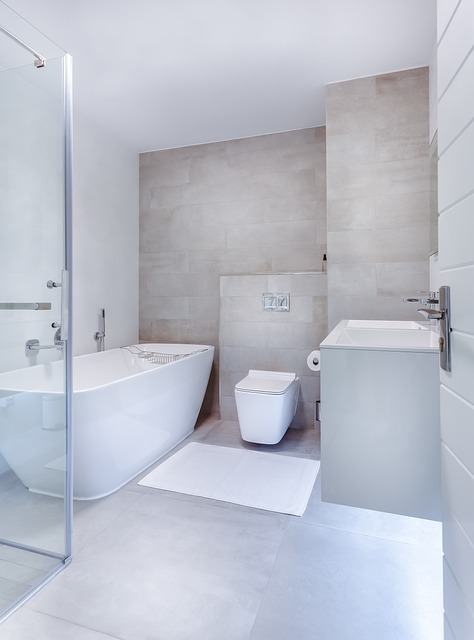
After successfully cleaning your tile floors, maintaining their cleanliness is crucial using the best methods for cleaning tile floors. Regular vacuuming or sweeping is essential to remove surface dirt and debris that can accumulate between deep cleanings. Consider doing this daily or at least several times a week, depending on the level of foot traffic in your home.
Using a mild, pH-neutral detergent and warm water is recommended for spot cleaning or quick refreshes. Avoid harsh chemicals as they can damage the tile and grout over time. For more stubborn stains, opt for specialized tile cleaners designed to dissolve grease, grime, and other hard-to-remove marks without leaving behind residue that could attract future dirt. Regularly deep clean your floors once a month with a thorough scrubbing and rinsing to ensure long-lasting cleanliness and protect your investment in tile flooring.
Safety Precautions During the Cleaning Process

When it comes to cleaning tile floors, safety should always be a top priority. Before beginning, ensure you have the right equipment, including protective gear such as gloves and eye wear. Many cleaning products contain harsh chemicals that can cause skin irritation or respiratory issues if not used properly. Always read and follow the instructions on cleaning solutions, and consider using eco-friendly alternatives whenever possible.
During the cleaning process, proper ventilation is crucial to prevent the buildup of fumes. Use a vacuum or broom to remove loose dirt and debris before applying any cleaning solutions. For areas with high traffic or slippery tiles, exercise caution to avoid falls. Regularly mop up spilled liquids immediately to prevent stains and slips. Remember, effective tile cleaning involves balancing thoroughness with safety for optimal results.
